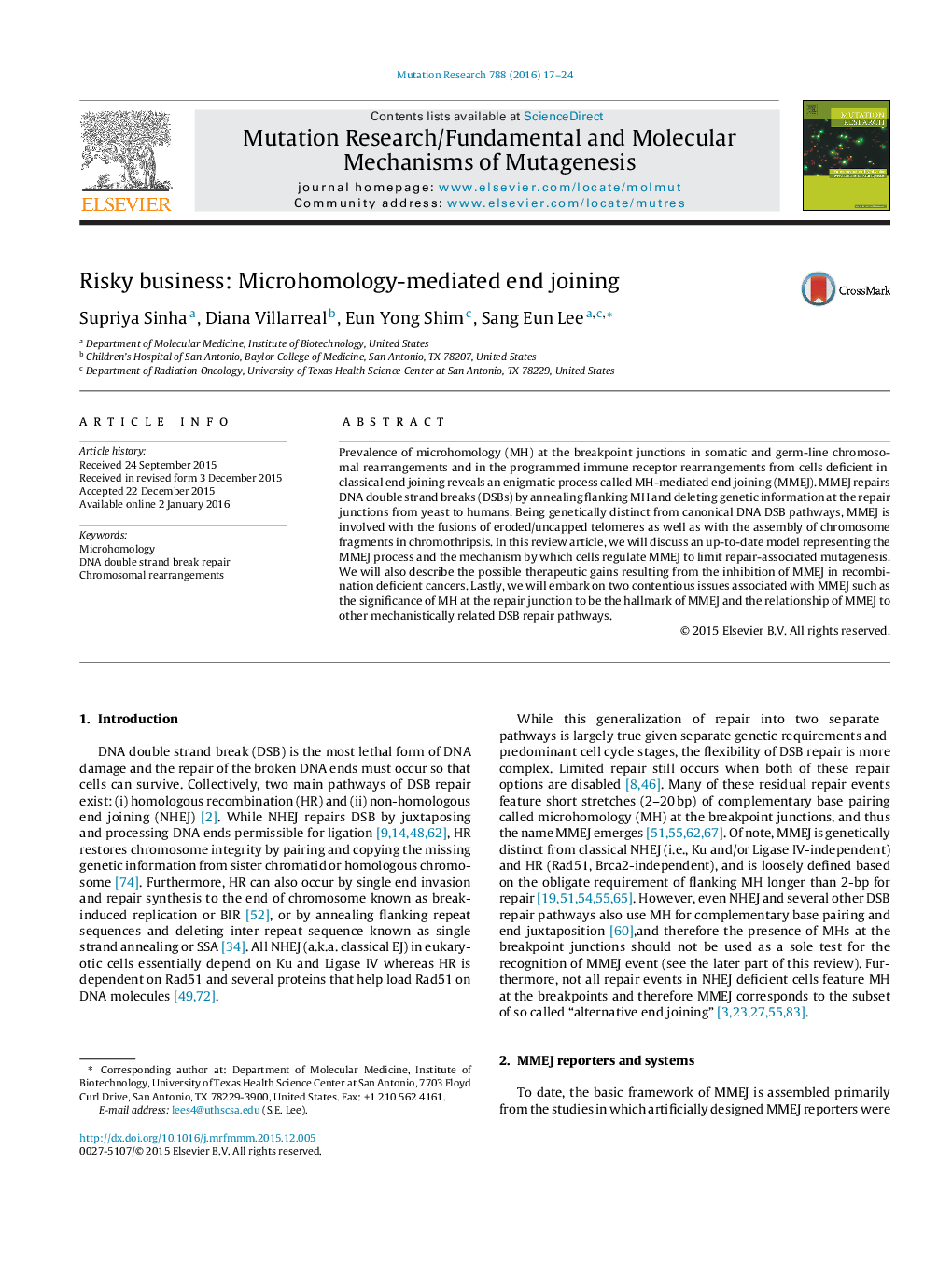| Article ID | Journal | Published Year | Pages | File Type |
|---|---|---|---|---|
| 2146139 | Mutation Research/Fundamental and Molecular Mechanisms of Mutagenesis | 2016 | 8 Pages |
Prevalence of microhomology (MH) at the breakpoint junctions in somatic and germ-line chromosomal rearrangements and in the programmed immune receptor rearrangements from cells deficient in classical end joining reveals an enigmatic process called MH-mediated end joining (MMEJ). MMEJ repairs DNA double strand breaks (DSBs) by annealing flanking MH and deleting genetic information at the repair junctions from yeast to humans. Being genetically distinct from canonical DNA DSB pathways, MMEJ is involved with the fusions of eroded/uncapped telomeres as well as with the assembly of chromosome fragments in chromothripsis. In this review article, we will discuss an up-to-date model representing the MMEJ process and the mechanism by which cells regulate MMEJ to limit repair-associated mutagenesis. We will also describe the possible therapeutic gains resulting from the inhibition of MMEJ in recombination deficient cancers. Lastly, we will embark on two contentious issues associated with MMEJ such as the significance of MH at the repair junction to be the hallmark of MMEJ and the relationship of MMEJ to other mechanistically related DSB repair pathways.
